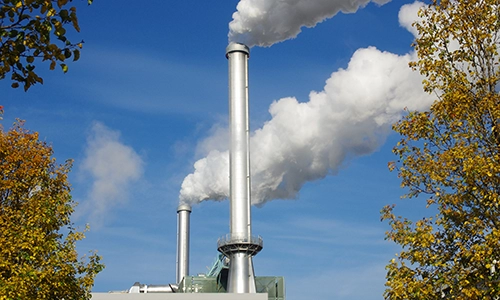Your Trusted Partner For PAHs Testing And Analysis
Pace® understands the challenges posed by Polycyclic Aromatic Hydrocarbons contamination, and we are dedicated to providing accurate and reliable testing services. The largest American-owned lab, our state-of-the-art facilities and experienced team offer a wide range of analytical capabilities for soil, water, sediment, and air.
In establishing your sampling plan, it may be necessary to consider factors such as the direction of groundwater flow or prevailing winds to estimate the migration of PAH contamination. If you are not sure where to start, Pace® experts can provide guidance and assist in the development of your sampling plan.

What Are Polycyclic Aromatic Hydrocarbons (PAHs)?
PAHs are a class of over 100 organic compounds that contribute to environmental pollution and threaten human health. They constitute a category of hydrocarbons (mixtures of organic compounds containing only carbon and hydrogen) found in some crude oils. PAHs are also created by the inefficient burning of coal, crude oil, fossil fuels, and garbage.
How Are Humans Exposed To PAHs?
Human exposure to PAHs is inevitable due to their widespread presence in air, water, soil, and food. The general population is exposed to PAHs mainly through inhalation and ingestion. Although PAHs exist at low concentrations in ambient air, epidemiologic studies have linked long-term low-level PAHs exposure with many adverse health outcomes.
In recent years, PAHs have received increased scrutiny in air pollution studies because some of these compounds are highly carcinogenic or mutagenic. In particular, benzo[a]pyrene (B[a]P) has been identified as being highly carcinogenic. Seven PAH compounds are considered to be human carcinogens (cPAHs). These include:
- Benzo[a]pyrene
- Benz[a]anthracene
- Benzo[b]fluoranthene
- Benzo[k]fluoranthene
- Chrysene
- Dibenz[a,h]anthracene
- Indeno[1,2,3-cd]pyrene


Why PAHs Testing Is Important
With high melting and boiling points, low vapor pressure, and very low water solubility, PAHs do not readily dissolve in water or volatilize into the atmosphere. These characteristics of chemical stability, hydrophilic tendency, and high sorption capacity contribute to PAHs persistence in the environment.
How Are PAHs Regulated?
Several state and federal agencies regulate PAHs contamination and exposure. Here are some of the primary programs currently addressing PAHs.

OSHA sets and enforces protective workplace safety and health standards. While OSHA has not established a PAHs substance-specific standard for occupational exposure, PAHs exposure is regulated under OSHA’s Air Contamination Standard for substances termed coal tar pitch volatiles (CTPVs) and coke oven emissions. These OSHA standards establish a Permissible Exposure Limit (PEL) for workers of 0.2 mg/m3 per cubic meter of PAH compounds – deemed as benzene soluble fractions of coal tar volatiles – over an 8-hour exposure period. Additionally, the OSHA PEL for mineral oil mist that contains PAHs is 5 mg/m3 averaged over an 8-hour exposure period.
NIOSH, part of the Centers for Disease Control and Prevention (CDC) in the U.S. Department of Health and Human Services, monitors chronic on-the-job health issues. For PAHs, NIOSH recommends that the average workplace air levels for coal tar pitch volatiles (CTPVs) not exceed 0.1 mg/m3 for a 10-hour workday within a 40-hour workweek. There are other limits for workplace exposure for things that contain PAHs, such as coal, coal tar, and mineral oil.
Established in 1972 by the EPA, the CWA covers the discharge of pollutants into the waters of the United States and sets quality standards for surface waters. Under this act, maximum contaminant levels (MCLs) for seven PAHs – benz[a]anthracene, benzo[a]pyrene, benzo[b]fluoranthene, benzo[k]fluoranthene, chrysene, dibenz[a,h]anthracene and indenol[1,2,3-c,d]pyrene have been established.
Certain PAHs are also subject to EPCRA reporting requirements. Under EPCRA, entities must report on the storage, use, and release of hazardous substances to federal, state, and local governments. This information helps communities, emergency planners, and first responders be better prepared for chemical emergencies by providing them with critical data about the presence of hazardous chemicals and any potential risks they may pose. Additionally, EPCRA fosters a greater awareness of potential chemical hazards for the general public, promoting transparency and empowering citizens to take an active role in protecting their communities. EPCRA data can be accessed through the EPA’s Toxic Release Inventory (TRI) database.
Numerous states across the U.S. have state-specific regulations addressing PAHs in soil, air, and water. Check with the appropriate regulatory body in the state you are working in to ascertain these regulatory criteria.
A Nationally Recognized Leader In PAHs Testing
Pace® provides a wide range of Polycyclic Aromatic Hydrocarbons testing services with defensible results that can be used for a variety of purposes, such as compliance, environmental site assessments, forensics, employee health and safety, and risk management.
Some of the PAHs we most frequently test for are:
- Benzo[a]pyrene
- Benzo[b]fluoranthene
- Benzo[k]fluoranthene
- Chrysene
- Dibenz[a,h]anthracene
- Indeno[1,2,3-cd]pyrene
- Fluoranthene
- Pyrene
- Benz[a]anthracene
- Benz[a]anthracene
- Chrysene
- Total Benzofluoranthenes
- Benzo[a]pyrene
- Indeno[1,2,3-c,d]pyrene
- Dibenzo[a,h]anthracene
- Benzo[g,h,i]perylene
- 1-Methylnaphthalene
- 2-Methylnaphthalene
Additional Resources
Need to find a lab that can handle your unique requirements?
Contact us directly or download our list of environmental certifications across our network.
On-Demand Webinar: PAHs Everywhere: A Close Look at a Familiar Issue